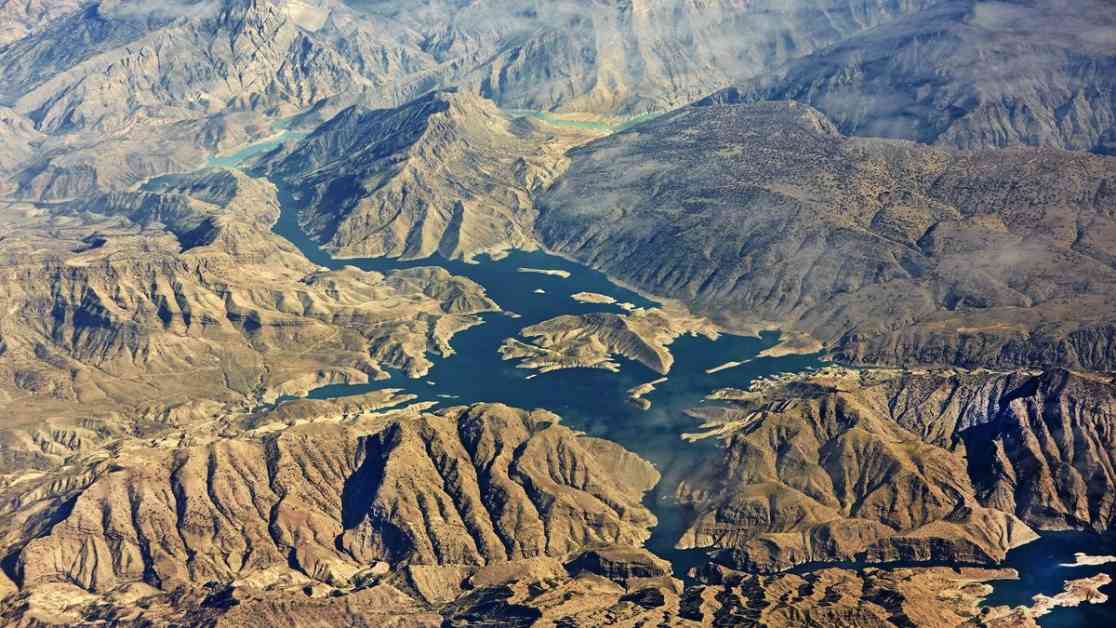A new discovery in the world of plate tectonics has shed light on a fascinating geological phenomenon occurring beneath the Zagros Mountains in Iran, where an oceanic plate is tearing apart deep below the Earth’s surface. This groundbreaking research, published in the journal Solid Earth on November 25, 2024, reveals the intricate interplay between the mantle and the crust that shapes the topography of our planet.
The story begins with the remnants of a long-lost oceanic plate, once part of the ancient Neotethys Ocean that existed over 20 million years ago after the breakup of the supercontinent Pangaea. As Neotethys closed up, the oceanic crust descended beneath the Eurasian continent, dragging the continental portion of the Arabian plate behind it. This collision with Eurasia led to the formation of the Zagros Mountains, creating a depression in the crust that eventually evolved into the Mesopotamian plain where the Tigris and Euphrates rivers flow.
The research, led by geologist Renas Koshnaw from Göttingen University in Germany, focuses on the southeastern side of the Mesopotamian plain, where an unusually thick layer of sediments has puzzled scientists. Through mapping and computer modeling, Koshnaw and his team discovered that this deep sedimentary layer is not solely the result of the mountain’s weight but is also influenced by the remnants of the Neotethys oceanic plate still sinking into the Earth’s mantle.
What makes this discovery truly remarkable is the revelation that the oceanic plate is not only descending but tearing apart as it moves beneath the surface. This tearing process is most evident on the west side of the Zagros Mountains, near Iraq’s Kurdistan region, where the plate has already begun to split. The tear is now progressing towards northwest Iran, providing a unique opportunity for researchers to witness the dynamic forces at play within the Earth’s crust.
According to Koshnaw, this tearing process is essential for understanding the geological forces shaping the region. As the oceanic plate pulls the crust downward from below, it relieves pressure on the overlying crust, influencing the topography of the area. By studying these dynamics, researchers can gain valuable insights into the formation of natural resources such as iron, phosphate, and copper, which are crucial for our understanding of the Earth’s geological history.
The implications of this research extend beyond academic curiosity, as faults formed by the collision of the Arabian and Eurasian plates are known to produce large, destructive earthquakes. By studying the intricate processes occurring beneath the Zagros Mountains, scientists hope to improve our ability to predict and mitigate the impact of such seismic events in the future.
In the words of Stephanie Pappas, a renowned science writer based in Denver, Colorado, this discovery brings us one step closer to unraveling the mysteries of our planet’s geological past. With each new revelation, we deepen our understanding of the forces that shape our world and pave the way for future discoveries in the field of earth science.
As we continue to explore the hidden depths of the Earth’s crust, the story of the tearing oceanic plate beneath the Zagros Mountains serves as a reminder of the dynamic and ever-changing nature of our planet. Through the lens of geology, we glimpse the vast and ancient history written in the rocks beneath our feet, offering a humbling perspective on the forces that have shaped our world for millions of years.










